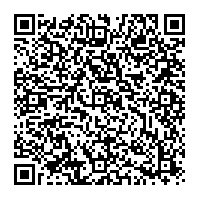It may be more appropriate to talk about turkey dinner this time of year, but some of my colleagues and I are arguing about whether one form of contactless payment or another is going to win the chicken dinner.
Earlier this year, my colleague Claire Greene posted about contactless payments and the difficulty a friend encountered when attempting to use a mobile wallet for in-person contactless payments. My colleagues and I have written other posts about the push to issue dual contact-contactless credit and debit cards that use near-field communications (NFC). This technology permits encrypted data transmission using an electromagnetic radio field over a short distance (less than two inches) between two NFC-enabled devices. While contactless card issuance has largely been limited to credit card portfolios, NFC has been a standard feature in most smartphones manufactured over the last decade, permitting the loading of debit and credit cards into the payment wallets. Despite the high penetration of the functionality on the consumer side, several major merchants have resisted enabling this technology at their points-of-sale because of the cost of doing so and card network acceptance rules, but that resistance seems to be waning. Moreover, consumer use of contactless payments has remained low. The 2019 Diary of Consumer Payment Choice (DCPC) indicates that contactless payments represented only about 3 percent of the average consumer's monthly credit card in-person payments.
Competing with NFC technology is the quick response (QR) code. Developed in 1994 by Japanese engineer Hara Masahiro to provide a more efficient way than barcodes for tracking auto parts in an automobile assembly plant, the QR code for payments applications is ubiquitous in China and Japan, and rapidly growing in many other Asian-Pacific countries. It has achieved great popularity with several major U.S. coffee and food chains for their proximity-payment and loyalty-program applications. The 2019 DCPC showed that 6 to 7 percent of the average consumer's stored-value card payments were completed using some contactless method, presumably many of these using QR-code technology. Recent developments have triggered an increased interest in QR codes for payments and a wide variety of other applications. In May, PayPal announced
barcodes for tracking auto parts in an automobile assembly plant, the QR code for payments applications is ubiquitous in China and Japan, and rapidly growing in many other Asian-Pacific countries. It has achieved great popularity with several major U.S. coffee and food chains for their proximity-payment and loyalty-program applications. The 2019 DCPC showed that 6 to 7 percent of the average consumer's stored-value card payments were completed using some contactless method, presumably many of these using QR-code technology. Recent developments have triggered an increased interest in QR codes for payments and a wide variety of other applications. In May, PayPal announced it was supporting the use of QR codes in its app for the purchase and sale of goods in 28 countries including the United States. CVS Pharmacy announced that, before the end of 2020, it would be integrating PayPal and Venmo QR codes in its checkout system in its 8,200 U.S. locations before the end of 2020.
The COVID pandemic has sparked renewed interest in QR codes because of their contactless nature. Guests at restaurants can scan a QR code to call up menus, place their order, and pay for their meal. Museum patrons can get more information about an exhibit or artwork. Some major broadcast networks and product brands are including QR codes in their on-air advertising to provide an interactive session with consumers—the QR code takes them to a website featuring a product or a specific show. All the major social media platforms are supporting the use of QR codes to follow accounts.
For the merchant, QR code technology is easier and less costly to implement than is NFC as long as the merchant can display a QR code for the customer's phone to read. Only software development is required; no additional hardware has to be purchased. The industry association supporting non-FI-owned ATMs is working to develop standards for the use of QR codes on ATM screens to support cardless ATM transactions.
From my perspective, it is still the early days for QR code adoption by consumers in the United States, outside of some proprietary retailer programs, but the increasing rate at which consumers will be encountering the technology in their everyday routine holds promise. Merchants consistently report they want to offer payment methods their customers prefer to use. So will one of the contactless technologies win out over the other, or will they coexist? Let us know what you think as we drop the breaded chicken pieces in the fryer and stir the country gravy.



 David Lott, a payments risk expert in the
David Lott, a payments risk expert in the